Goldendoodles are great dogs; I’m sure absolutely no one would deny that! Yet despite the ‘golden’ part of their name, which they get from their Golden Retriever parent, these gorgeous pups actually come in a wide array of colors, everything from black to red and various shades in between. Here we’ll explore some of these Goldendoodle colors and patterns. We will also consider the impact of coat color on health and behavior, all to help you find the perfect dog for you.
Table of Contents
- Goldendoodle Colors: Background
- The Science Bit
- Predicting Goldendoodle Colors
- Goldendoodle Colors
- Different Goldendoodle Patterns
- Does Coat Color Effect Goldendoodle’s Health and Behavior?
- Goldendoodle Colors: Which One Should You Get?
- Frequently Asked Questions About Goldendoodle Colors
- Goldendoodle Color Final Thoughts
This page is sponsored by our
Featured Goldendoodle Breeders
Goldendoodle Colors: Background
Like all other dogs, Goldendoodles inherit their coat color from their parents. There are multiple possible combinations in the canine world. The coat color your pup ends up with depends on the mix of dominant and recessive genes that they receive from both parent dogs and how these genes interact.
Golden Retriever Colors
According to American Kennel Club standards, Golden Retrievers come in three distinct shades: dark golden, golden and light golden. Their coats are a single color all over with no apparent markings.
Poodle Colors
Poodles, on the other hand, can come in ten different solid colors: apricot, black, blue, brown, cream, gray, red, silver, silver beige, and white.
As well as that, they can also come in 18 different mixed colors: black & apricot, black & brown, black & cream, black & gray, black & red, black & silver, black & tan, black & white, blue & white, brown & apricot, brown & white, café au lait, cream & white, gray & white, red & apricot, red & white, white & apricot, and white & silver. Phew!
Poodles also bring patterns into the mix.
The Science Bit
Without going into too much detail, the coat color of every single dog on the planet is a product of two main pigments: eumelanin (responsible for shades of black) and pheomelanin (which covers shades of red and yellow). The genes that a dog gets determines how much of each of these are produced, as well as how they might be diluted or mixed with white (the complete absence of pigment).
For more details on how this all plays out, check out this handy description by VCA Hospitals.
Each puppy inherits one set of color genes (known as alleles) from their mother dog and one set from their father dog – so they end up with two in total. However, only one of each pair is actually expressed (one set of instructions is used and the other isn’t). This all depends on whether the alleles are dominant or recessive, and some are more or less dominant than others.
Predicting Goldendoodle Colors
So, to get back to Goldendoodles….
In very basic terms, the Golden Retriever’s limited colors are recessive, while many of the Poodle’s varied shades are dominant. The Poodle colors are more likely to come through. To be golden, the puppy would need to inherit two recessive golden alleles – one from each parent. However, according to official standards, this is one of the few shades Poodles DON’T come in, making it very unlikely. The puppy will most likely be a similar color to their Poodle parent. Yet this obviously only applies to first-generation Goldendoodles.
With later-generation dogs, things get even more complicated as there are more Poodle genes to contend with. For instance, you may feel confident that with two black dogs you will get black puppies, right? After all, black is dominant. Well, as covered above, dogs inherit two alleles, and even though the dominant one is expressed, a recessive one could be passed along to their offspring. If both parents have recessive golden color alleles and both pass these along, then you could very well end up with a golden puppy from two black parents!
What this all means is that 1) your Goldendoodle likely WON’T be golden, but 2) it’s impossible to predict with any degree of certainty just what color they will be. What we can do is take an educated guess based on what we know and what we have observed about how the genes that determine coat color interact. Breeders may also opt to have their dogs tested to see which alleles they carry. This can make any coat-color guestimations that much more accurate.
All in all, with those crazy, varied Poodle genes, Goldendoodles can come in pretty much every color that a Poodle comes in – and weirdly more besides. Unlike with Poodles, pedigree standards do not govern the breeding of Doodles. So, we are starting to see an array of mixes and patterns, many of which we have detailed below.
Goldendoodle Colors
Here are a few of the many different colors of Goldendoodles:
Chocolate Goldendoodles
Chocolate, liver, or brown Goldendoodles are fairly rare. Their coloring is typically the result of a mutation in the gene that would otherwise produce a black coat. These mutated genes are recessive, so the puppy would need to inherit one from each parent to end up this color.
While chocolate Goldendoodles are often born quite dark – sometimes even black, they tend to fade a fair bit as they age. Their color could ‘silver’ right down to café au lait or a stunning silver beige over the first two years. This process can begin as early as six weeks and will be most noticeable at this time on their muzzle and between their paw pads.
Apricot Goldendoodles
A variation on red, an apricot coat is one of the most sought-after for a Goldendoodle. It gives pups the appearance of a cute teddy bear (even more so than their hair and adorable features already do). However, as this color is created by a recessive gene, the puppy must inherit it from both parents.

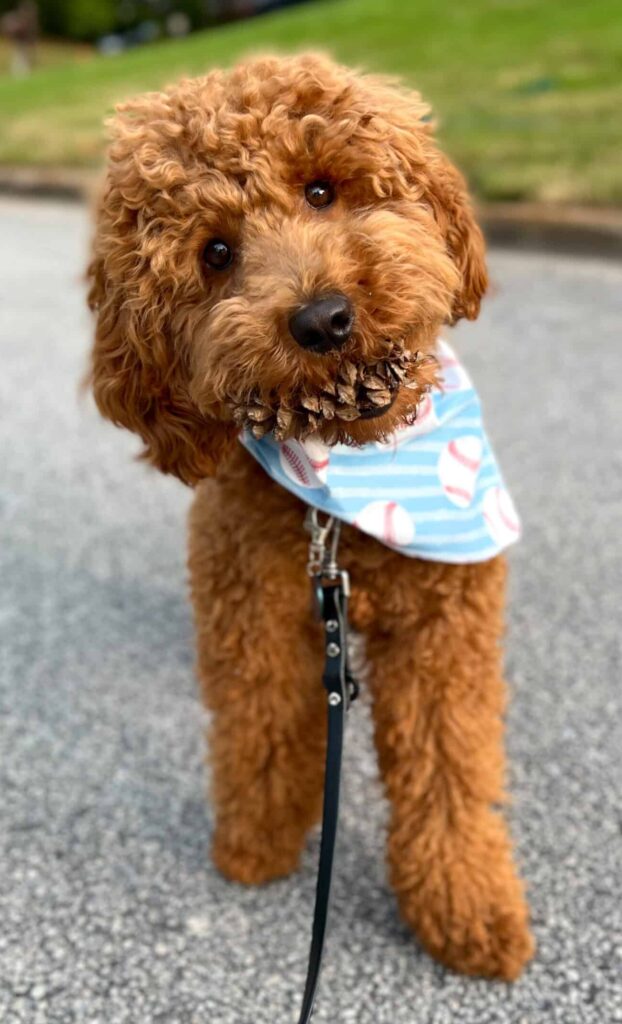
This coat color typically starts off a little darker and lightens over time. Depending on the interplay of genes, it can lighten quite considerably. For this reason, apricot Goldies may sometimes be confused with cream or tan ones. They will almost always have black eyes, eye rims, noses, and toenails, all inherited from the Poodle.
Cream Goldendoodles
Again, from the red line, cream Goldendoodles are frequently confused with white ones because of how light their coat can get – but they are very definitely not the same. These dogs are often used for breeding dogs with multi-colored coats, such as merle or parti Goldendoodles (covered later).
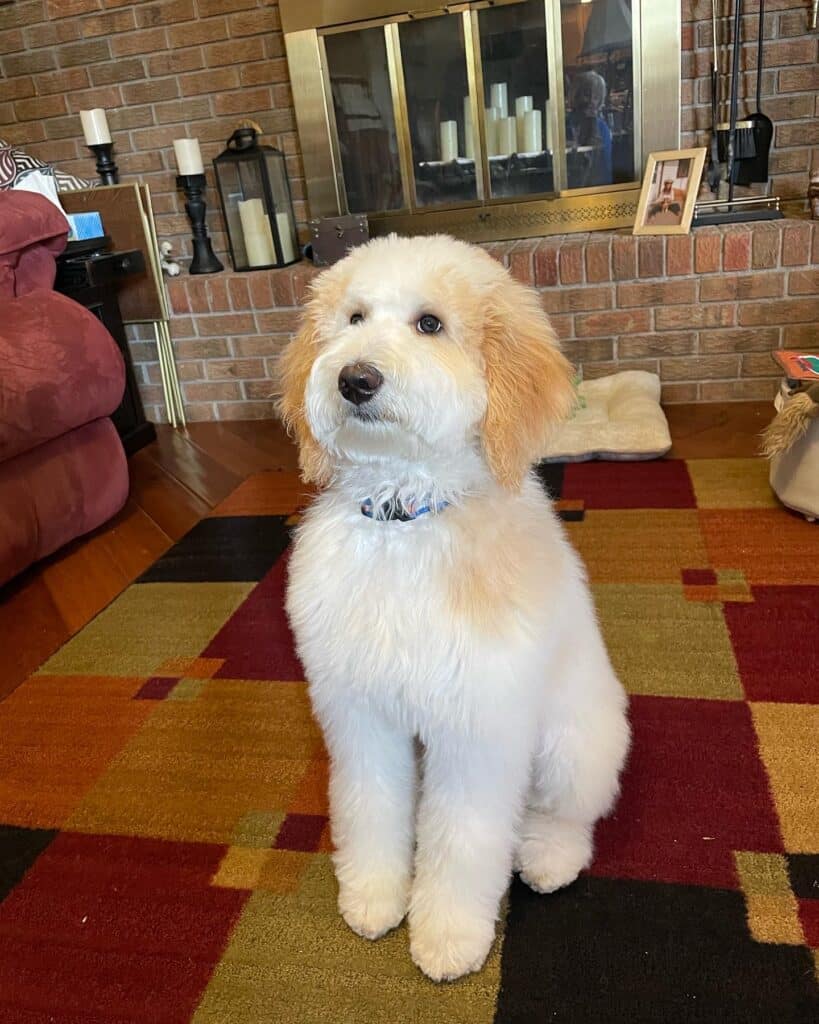
Cream Goldies inherit their colors from both parents – a touch of gold to a little white. This is one of the reasons that they have the most extensive variation of coat tones and points with either dark or pinkish noses and paw pads, and light or dark eyes.
Champagne Goldendoodles
Other golden Doodle colors you might see include champagne. These dogs are extremely rare but definitely out there. Champagne Goldendoodles are so named for the yellowish tinge to their light, beautiful coats. These dogs have a recessive red gene that is diluted into this stunning pale yellow tone.

In some cases, it might be a little tricky to tell the difference between a cream Goldie and a champagne one. Champagnes tend to have a touch more color. Obviously, they lean more towards the Retriever’s golden than the cream’s pale apricot or slight café au lait hue. Puppies may be born with a darker golden coat which lightens as they age.
Black Goldendoodles
It’s pretty uncommon to see a jet black Goldendoodle for three key reasons: Firstly, as strange as it seems when you see these gorgeous dogs, they aren’t very popular among potential owners. It seems like the black color doesn’t enhance the famous teddy bear look like other colors do.
Secondly, the gene that creates a black coat is recessive, meaning that black coats are only likely in second and third-generation dogs. Finally, the Poodle fading gene can be quite active in these pups, silvering them down to grey, blue, or, naturally, silver once they are past their puppy years.
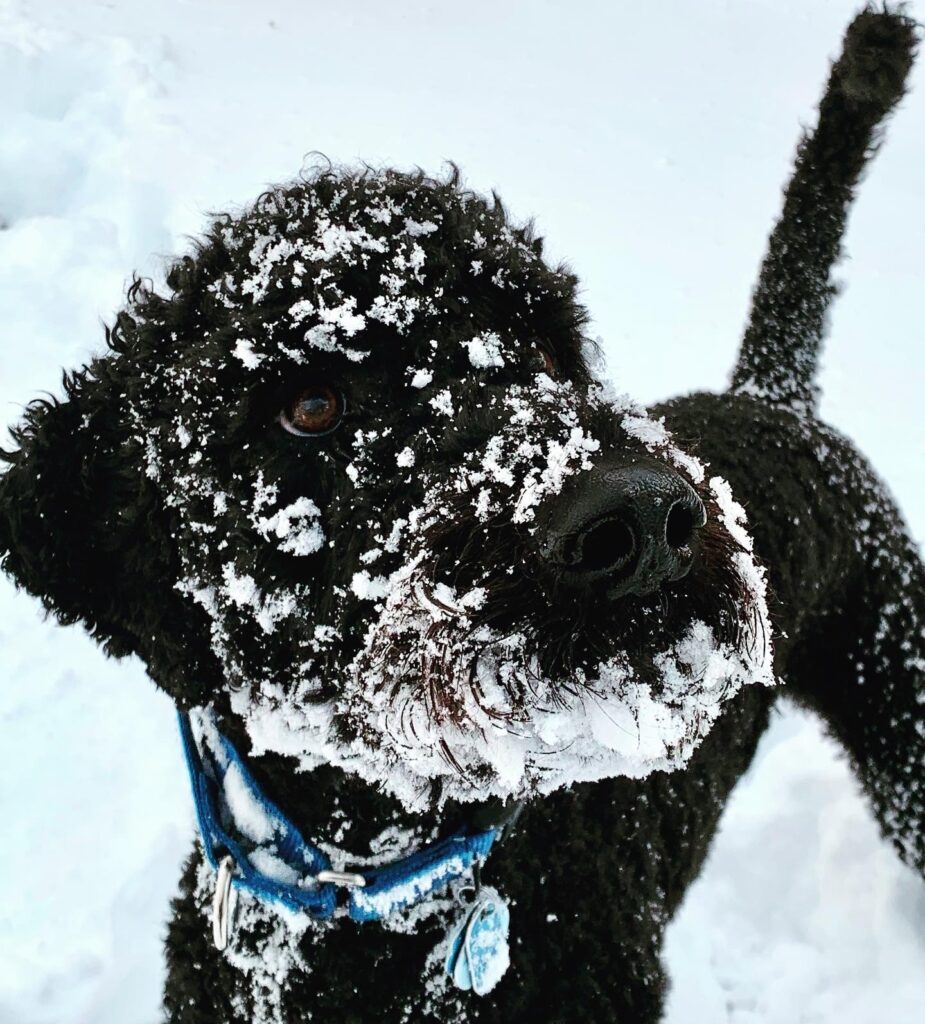
Black and White Goldendoodles
While most black Goldendoodles are a single color, occasionally, you will also come across ones with white markings. In some cases, white may even be the more dominant color with just a touch of black. As with other parti and patterned coats, black and white Goldies are most often found in later generations.
Black and white Doodles may also be referred to as tuxedo, parti, merle, phantom, and brindle. However, each of these describes very particular markings (which are all covered in the next section) and so can’t be used generically for all dogs of this coat color.
Gray Goldendoodles
Not surprisingly, Gray is derived from the black line and inherited from the Poodle side of the Golden Retriever-Poodle combination. This is another rare shade in these types of dogs and only really occurs with multigenerational breeding.
These Goldies are usually born very dark in color and start to show as gray after around six weeks. By the time these dogs hit two years of age, they will have faded into their adult hue. However, color holding can occur around the face and ears giving a cute two-tone effect.
Blue Goldendoodles
At first glance, blue Goldendoodles can look very similar to gray ones. However, they are generally a darker, more steely shade, and their coat can have both darker and lighter patches. This color is super rare, being recessive. It takes multiple generations of Goldendoodle breeding to achieve.
Like gray Doods, blues are born dark and fade out across the first two years of their lives. Their coats may even continue to clear as they age, but a select few will remain truly blue. Again this color is tricky to predict. You never really know what you are going to get when you adopt a black Goldie.
Silver Goldendoodles
A lighter version of blue or gray Goldies, silvers are also born a much darker color and just keep on fading. You might see signs that a pup will be silver from somewhere around six to ten weeks, where you can start to spot lighter roots. You will likely also find white or silver hairs between their toes.
The shift from black to silver is probably the most dramatic of any of the Doodle coat changes. Your pup will look like an entirely different dog when it is done. However, this color change doesn’t happen for several years. For this reason silvers are often mistaken for grays early on in life.
Silver Beige Goldendoodles
Unlike regular silvers, silver beige Goldendoodles are born dark brown. However, just like regular silvers, they lighten as they age. They may hold as a café au lait shade or fade right down to a warm but very light silver color. The lighter the final color, the earlier the puppy will start clearing – anywhere between six to twelve weeks.
Silver beiges can sometimes be mistaken for sables as they start to fade. The combination of colors in their coat gives this effect. However, they don’t have the black-tipped hairs of sables and will often lighten beyond this hue.
Tan Goldendoodles
Tan Goldies get their coloring from their Retriever parent. Just as with apricot and cream dogs, tan occurs because of a dilution in the red pigment pheomelanin. This color sits somewhere between these other two more popular and more common ones.
Often these dogs have shades of light apricot, cream, and white mixed in with their coat. Although from a distance, they do appear a single uniform shade. They are a little more subtle in color than their apricot counterparts which probably explains why they aren’t quite as in demand.
White Goldendoodles
Although they look distinctly white from a distance (compared with their warmer-toned cream counterparts), white Doods are often not white all over. They have various shades of cream mixed in throughout their coat.
This color is the result of two recessive alleles, which means that you won’t find first-generation white dogs as Golden Retrievers don’t carry this gene. Unlike cream, white is not the result of fading, so white puppies will actually be born white and retain this color all through their lives.
Different Goldendoodle Patterns
Sable Goldendoodles
Sable is a gene that gives the dog’s coat the appearance of two tones or colors, with the tips of the hair being black. While these dogs look either brown or black at birth, even at this early time, the root of the hair is much lighter than the tip.
Sable Goldendoodles tend to hold onto their dark color around the face and ears. The rest of their coat settles into more of a cream or tan shade, although always with darker tips and lighter roots. This makes for a really unique-looking dog!
Abstract Goldendoodles
Dogs with abstract coats are mostly one single color (be it any of the ones outlined above) with touches of another color. These are usually found on their face and around their chest and paws. Such dogs are also referred to as mismarked or chrome.

Abstract Doodles often come about because they carry one of the recessive ‘parti genes.’ These genes result in two coat colors rather than a single one. As the pup only has one allele, the entire gene isn’t expressed (two are necessary for this to happen), so the second color covers less than 50% of the pup’s body.
Phantom Goldendoodles
Super hard-to-find phantom Goldendoodles comprise two colors – a base shade (solid chocolate or solid black) and a lighter one. The lighter points are usually to be found around the eyes, muzzle, and legs. Most Phantom Goldendoodles are commonly black and tan, but this can vary, e.g., brown and silver.
Phantom is a recessive gene, so both parents would need to have it for the puppy to inherit this pattern (so it’s not found in the first generation). However, it’s easy to tell a phantom dog right off as puppies are born with these specific markings. They don’t develop over time like other patterns.
Parti Goldendoodles
Dogs with parti coats are two distinct colors, with the second one usually being white. To be considered a parti rather than an abstract Doodle, the pup needs to have a 50-50 color breakdown rather than simply a few highlights. You can find parti hounds in every color covered above, but no two look the same.
As mentioned above, the parti gene is a recessive one, and so the Goldie would need two for them to be expressed. So you only find parti dogs in second and third generations as Golden retrievers don’t carry these genes. However, there are plenty of parti Poodles about.
Tuxedo Goldendoodles
Tuxedo Goldendoodles are another two-color mix. Any of the above colors are combined with white. However, the white is concentrated around the chest and front legs. This gives the pup the appearance of wearing a tuxedo (hence the name).
As you can imagine, these pooches are pretty popular because of their distinctive appearance – especially when in black and white. Their markings are apparent from birth. Although, naturally, the white splotches often begin small and get more prominent as the dog matures.
Merle Goldendoodles
Merle Goldendoodles are another extremely uncommon type. They come in ‘classic’ and ‘watercolor.’ Classic merles have some blue or chocolate patchwork or tickings on their body. Watercolor merles, which are harder to find, also have tickings, but their coat lightens with age.
Merle coats are tricky for breeders to work with as the gene that causes this pattern is also linked to health issues such as deafness and blindness. So careful breeding by someone very knowledgeable about canine genetics is needed. That’s why these pups generally cost considerably more.
Brindle Goldendoodles
Brindle, another parti-color pattern, is rarely seen but looks truly striking when coupled with the Doodle’s attractive features. This unique pattern of dark and light coat is arranged in such a way as to make the dog look like it has tiger stripes.
While the width and color of these stripes vary from dog to dog, in Goldendoodles, it usually takes the form of a black or brown base coat with lighter colored stripes. However, Brindling is also the result of a recessive gene, which is why it’s so difficult to breed for and to predict in Goldie pups.
Tri-Colored Goldendoodles
With the increasing amount of multigenerational Goldies, color options are becoming ever more varied. Tri-colored isn’t common to these dogs because this kind of coloring doesn’t occur in either Poodles or Golden Retrievers. However, it is very usual in other types like Bernedoodles (from the Bernese Mountain Dog).
Often you will find that Goldendoodles that carry this coloring aren’t Goldendoodles, strictly speaking. They usually have a little of another breed in them – one that does carry the tri-color gene. Golden Mountain Doodles (Golden Retrievers, Bernese Mountain Dogs, and Poodles) are becoming increasingly popular, not least for their cool coloring.
Does Coat Color Effect Goldendoodle’s Health and Behavior?
To date, no research has demonstrated a link between color and behavior. Rumors that say differently can actually be quite harmful. For instance, some people equate black dogs with higher aggression levels. This is simply not true.
On the other hand, there are a few studies that link specific colors with certain health conditions. For instance, the merle gene (as outlined above) can lead to certain conditions such as deafness and blindness.
These days, most breeders focus on breeding extremely healthy puppies over ones of a particular color or pattern type. The parent dogs are thoroughly tested for genetic conditions that they otherwise might pass down to their puppies. That’s why you should always search out a responsible facility when purchasing a Doodle puppy.
Goldendoodle Colors: Which One Should You Get?
In all honesty, with no coat color being better than any other in terms of health and behavior, your choice of Goldendoodle should be based on health and temperament over looks.
However, naturally, people have different preferences about these things. So, once you have ascertained that the puppies you are checking out are all good, you can choose the one that looks best to you.
Keep in mind that the Poodle fading and silvering genes make it quite likely that your Dood’s coat color will change as they get older. Usually, the intensity is reduced, and black dogs switch to gray or silver while red ones dull down to apricot or cream.
Frequently Asked Questions About Goldendoodle Colors
The apricot Goldendoodle is the most popular color choice, with cream being second and red in third place. Sables are also pretty in-demand, but it’s not in the same league as the other three. More popular colors usually translate into more expensive.
Most Goldendoodles are born with dark coat colors that change, fade, or silver to a lighter color with age, depending on their inherited genes. This is known as clearing and generally occurs within the first two years. The muzzles and ears of a Goldendoodle tend to hold more of the original colors as other parts change.
There is no specific color of Goldendoodle that is best. The one that you opt for will be based on what you like. While red tones are pretty popular among the Doodle-fan crowd, some opt for dogs with rarer colors like black, blue, and silver. Others want different and distinct patterns that only come with multigenerational breeding.
As you might expect from the larger presence of warmer-hued genes, from the Golden Retriever side of the equation, variations of blue, grey, and silver are among the rarest colors of Goldendoodle. These typically only occur through careful multi-generational breeding and with dogs that have a higher than 50% concentration of Poodle genes.
Goldendoodle Color Final Thoughts
While color is one of the first things people notice about puppies, it should be one of the least important factors to base an adoption decision on. When purchasing a puppy, you want to ensure that they are healthy and have the right temperament – family-friendly, active, playful, etc. Only then should you start to consider color.
No matter which Goldendoodle you decide is right for you, it will no doubt be love at first sight. Not just because of their adorable appearance, but because they make excellent, loving companions. You will never regret your choice to adopt one.
Learn How to Care for Your Doodle Puppy!

Perfect for first-time Doodle parents, get ALL your questions answered, including questions new Doodle parents don’t even think to ask.
Plus, get $700 worth of Bonus Materials for FREE, including:- Doodle Parenthood Community and Support Group ($190 value)
- Doodle Puppy Growth Tracker ($20 value)
- EMERGENCY Cheatsheet: When To Call The Vet Immediately ($50 value)
- HELP! Button ($145 value)
- And SO MUCH MORE!

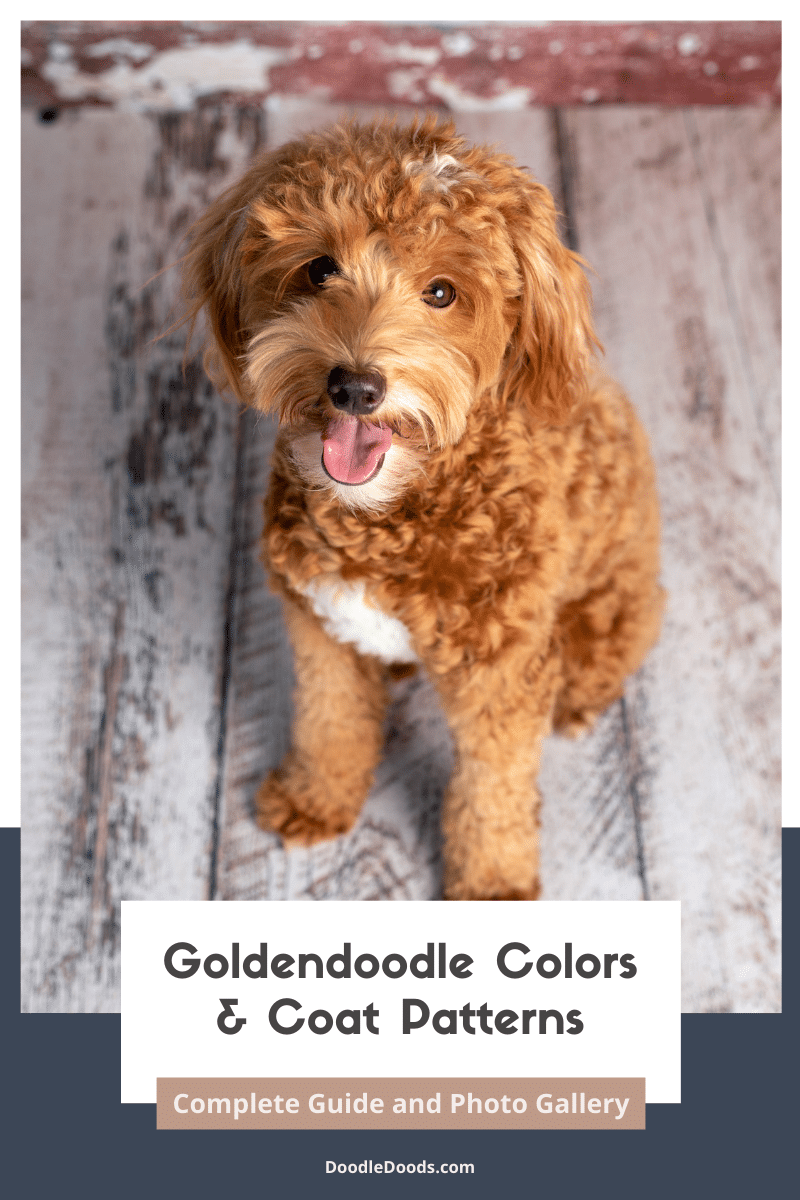

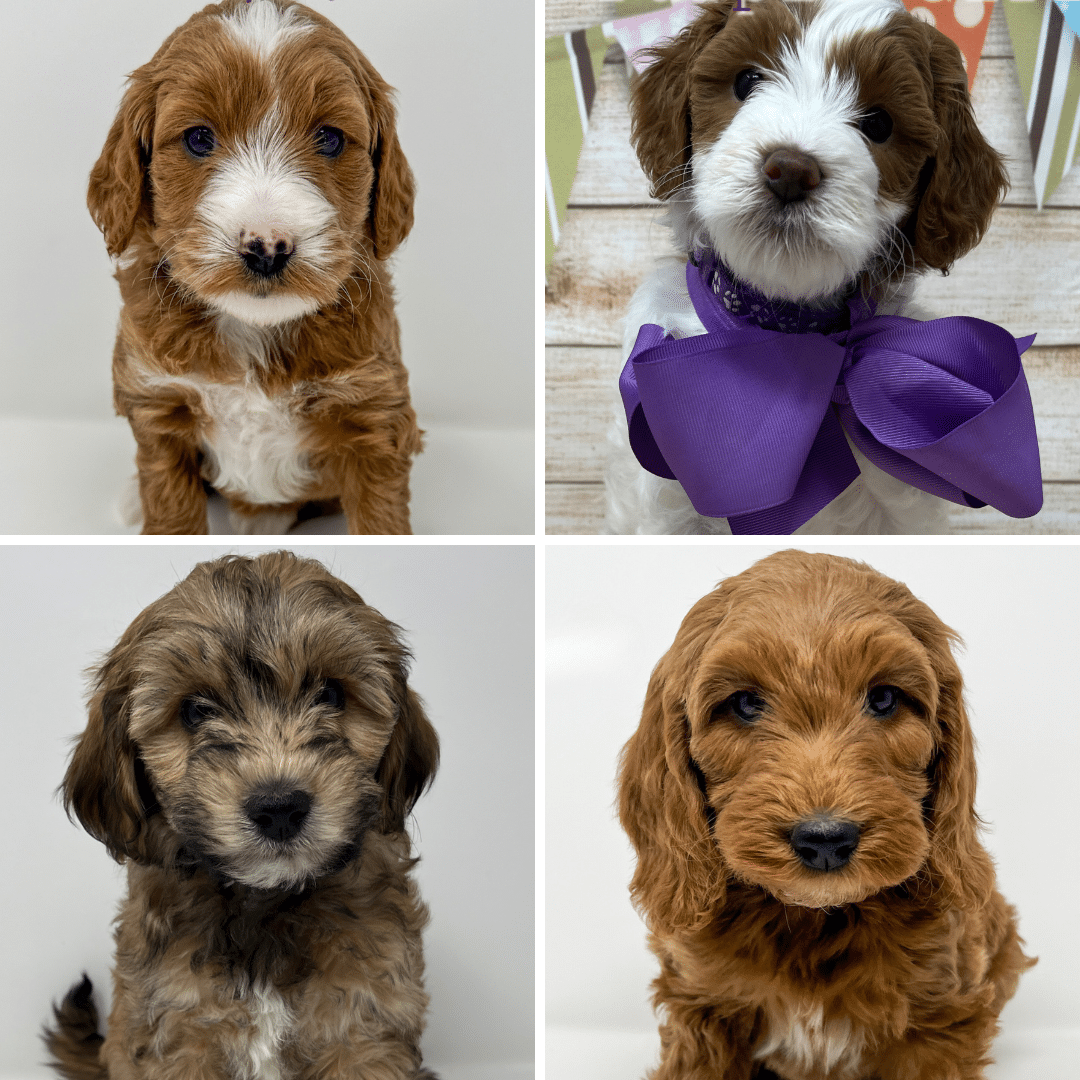
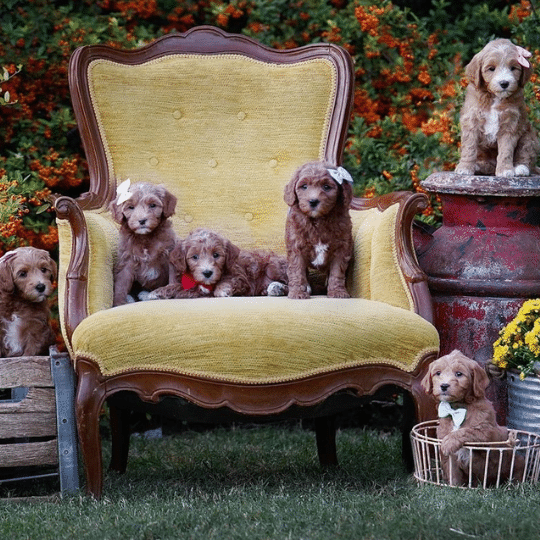
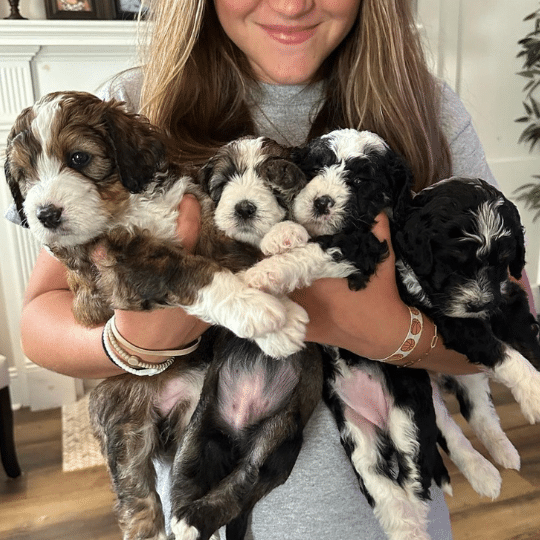
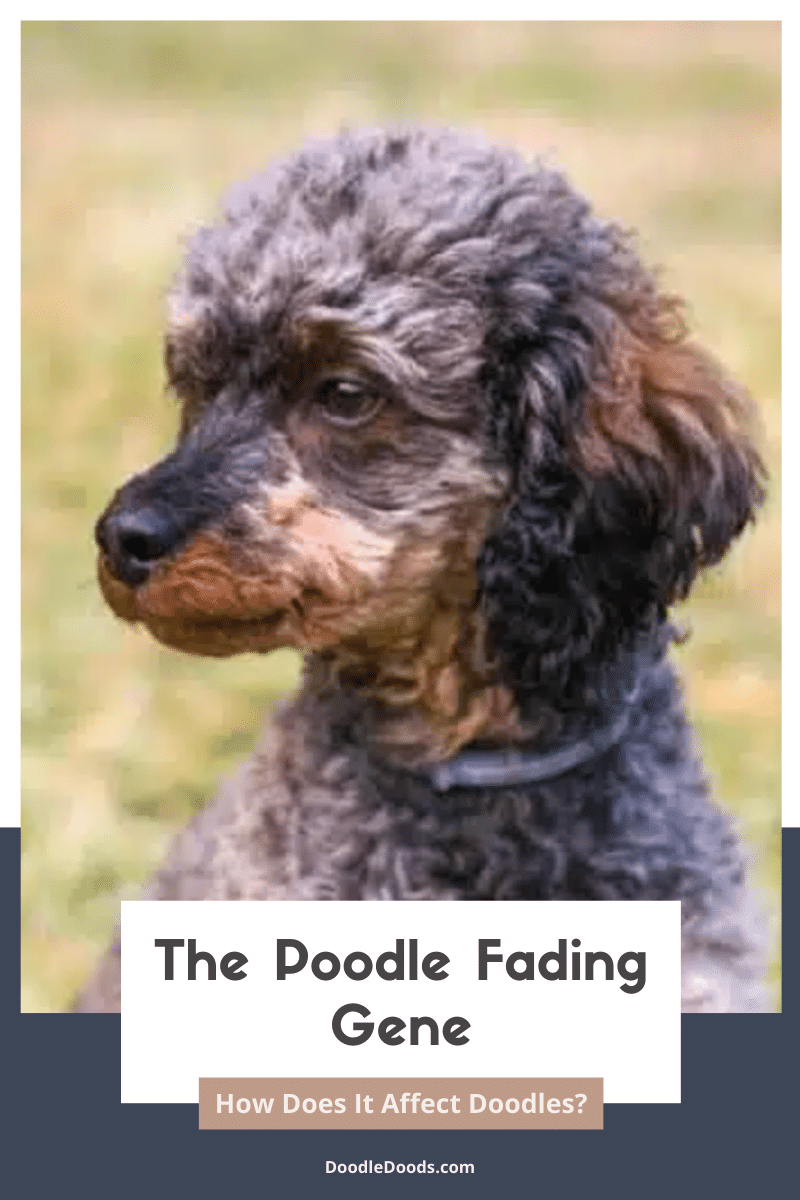
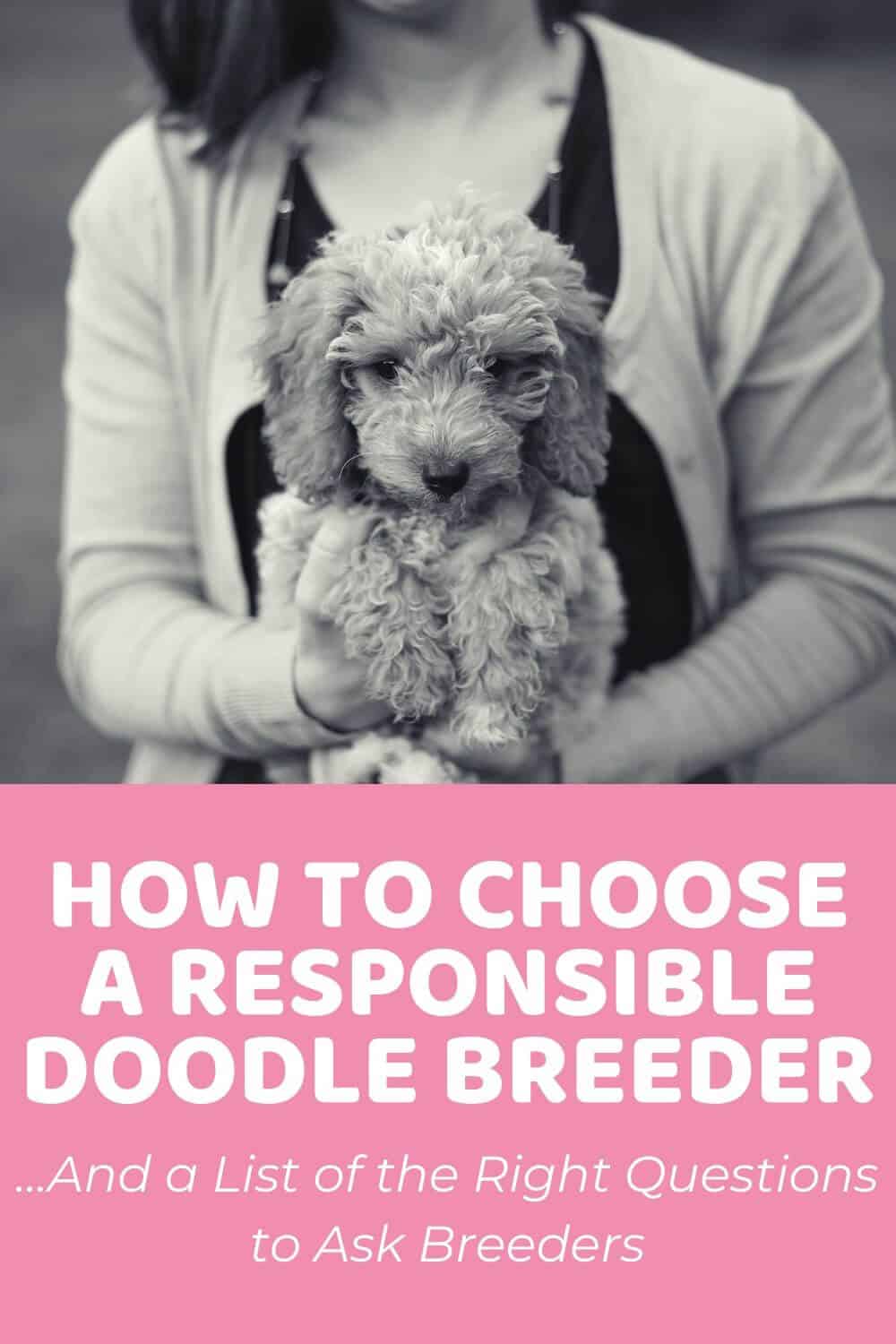


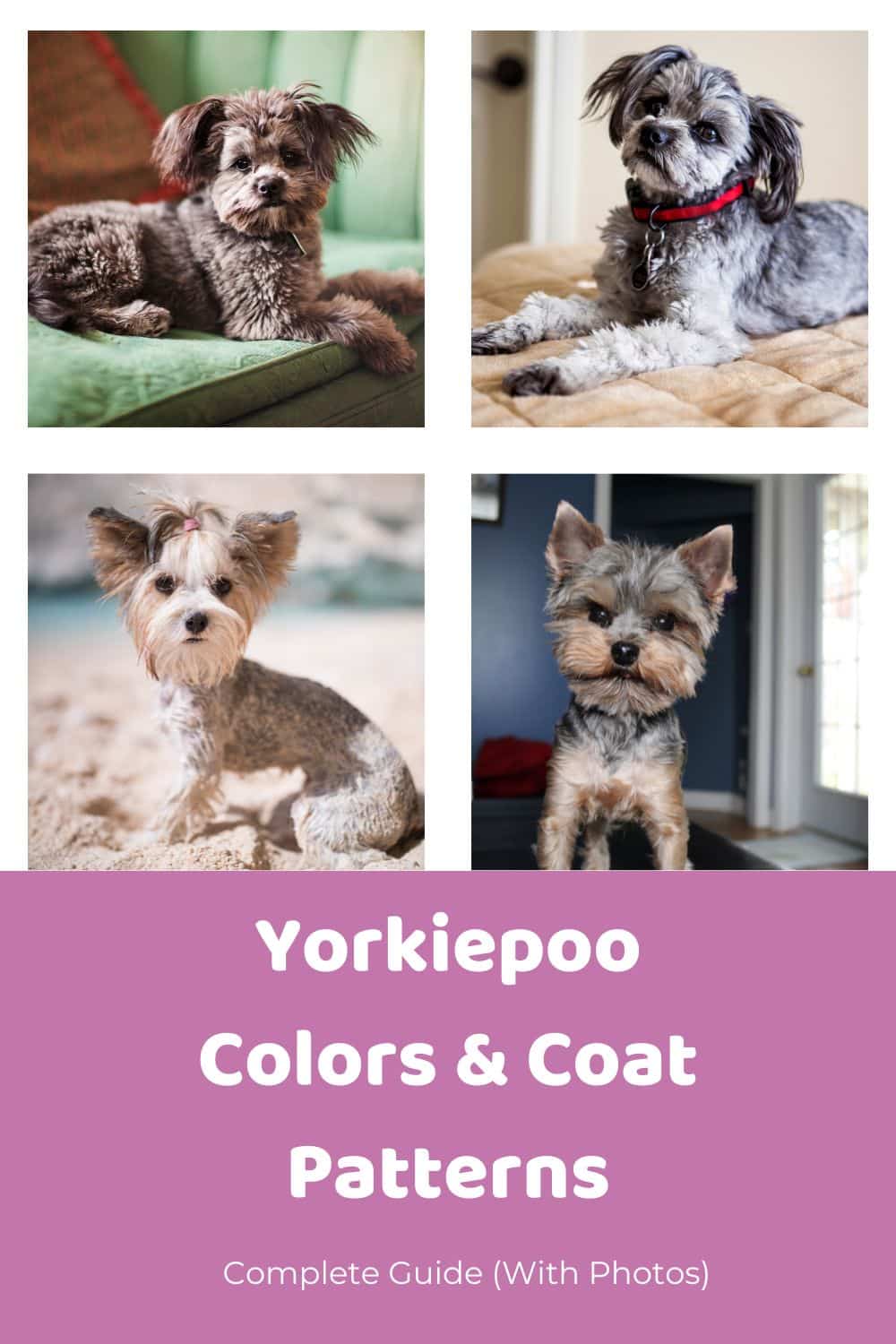

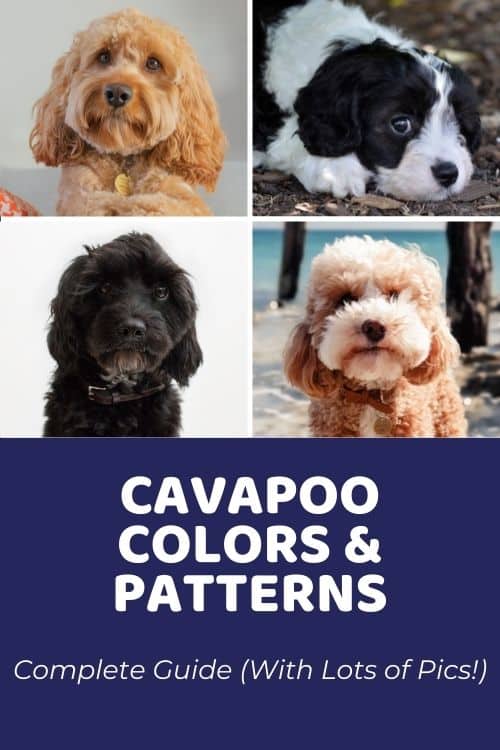
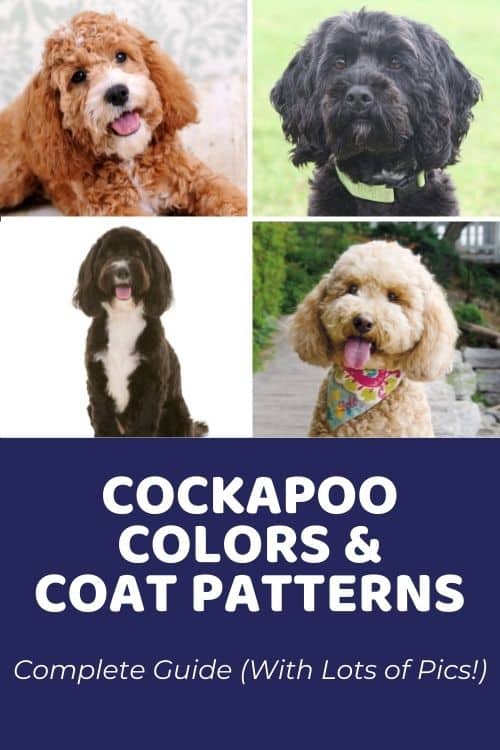


What color of Goldendoodle is your favorite? Let us know in the comments below!